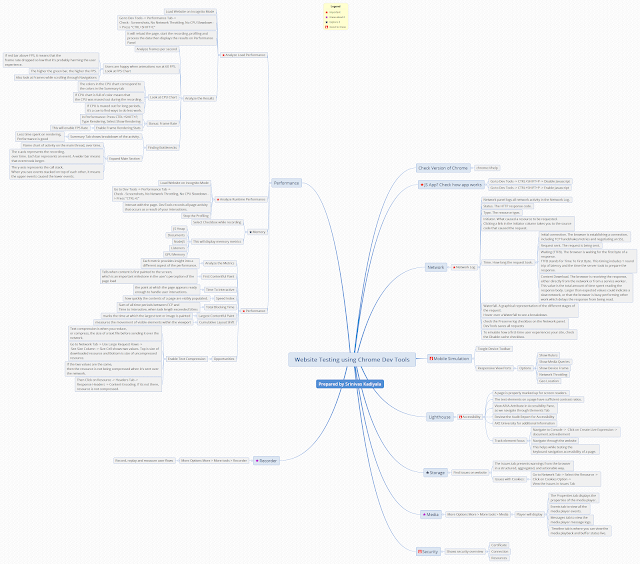Learn about different types of API’s, share your findings.
Yet Another Challenge! Ministry of Testing got us 30 days Testing Challenge.
This time topic is on API Testing.
It has been long time I have worked on API Testing, after learning from API Testing Dojo (year 2015).
11th Challenge is Learn about different types of API’s, share your findings.
There are different views on Different Types of API's.
View #1:
APIs come in many shapes and sizes. Even when APIs may share a common resource, the likelihood that they are similar in functional.
We can organize API's into different meaningful groups.
Understanding the type of data an API provides is important to this classification.
View #2:Based on the API business strategy and interface architecture, There are three different types of API's.
Managing a private API program may sound easy: interfaces are only exposed to internal developers, reducing security risks; API designers have direct access to these developers, making it easier to create dev-friendly interfaces. However, it is important to remember that exposing software interface always creates a range of security and management challenges.
Therefore, for business managers and interface designers alike, the key goal should be to increase both the quantity and quality of API usage. This will mean targeting a specific dev audience, delivering an interface and accompanying documentation designed to meet that audience’s preferences and conducting targeted outreach/education activities.
With many third-party client apps active in the field, it can be very challenging to ensure that interface updates do not break application functionality.
A partner API is a hybrid form of the open and private interface models. This kind of API is usually implemented to support applications built by developers within an organization that has an existing relationship with the API publisher. This means that business managers and interface designers will have knowledge of and direct access to client application developers.
While this will certainly ease the process of designing and implementing an API, it must be noted that publishing a partner APIs comes with its own set of challenges. Many of these challenges arise from the fact that – although managers and designers will have some access to client developers, they lack direct influence or authority over these devs.
Reference: https://www.apiacademy.co/lessons/2015/04/api-strategy-lesson-201-private-apis-vs-open-apis
Other Views:
While reading the Topic Thread - https://club.ministryoftesting.com/t/30-days-of-api-testing-day-11-learn-about-different-types-of-api-s-share-your-findings/20047/3 , I have learnt below details.
Reference: https://ffeathers.wordpress.com/2014/02/16/api-types/
Reference: https://www.mulesoft.com/lp/ebook/api/restbook
Note: If you are working with APIs, find out which type of API you are currently working with from the list.
There are different views on Different Types of API's.
View #1:
APIs come in many shapes and sizes. Even when APIs may share a common resource, the likelihood that they are similar in functional.
We can organize API's into different meaningful groups.
Different Types Of APIs:
- General Data - You can get at data across the platform, users, and resources.
- Relative Data - You can get at data that is relative to a user, company, or specific account.
- Static Data - The data doesn’t change too often, and will always remain fairly constant.
- Evolving Data - The data changes on a regular basis, providing a reason to come back often.
- Historical Data - Provides access to historical data, going back an X number of. years.
- Service - The API is offered as a service, or is provided to extend a specific service.
- Algorithmic - The API provides some sort of algorithmic functionality like ML, or otherwise.
Understanding the type of data an API provides is important to this classification.
http://api.gallery.streamdata.io/ has 39302 API paths classified into 869 topics.
Reference: https://apievangelist.com/2018/08/21/identifying-the-different-types-of-apis/
- Private API's -
Managing a private API program may sound easy: interfaces are only exposed to internal developers, reducing security risks; API designers have direct access to these developers, making it easier to create dev-friendly interfaces. However, it is important to remember that exposing software interface always creates a range of security and management challenges.
- Open API's
Therefore, for business managers and interface designers alike, the key goal should be to increase both the quantity and quality of API usage. This will mean targeting a specific dev audience, delivering an interface and accompanying documentation designed to meet that audience’s preferences and conducting targeted outreach/education activities.
With many third-party client apps active in the field, it can be very challenging to ensure that interface updates do not break application functionality.
- Partner API's
A partner API is a hybrid form of the open and private interface models. This kind of API is usually implemented to support applications built by developers within an organization that has an existing relationship with the API publisher. This means that business managers and interface designers will have knowledge of and direct access to client application developers.
While this will certainly ease the process of designing and implementing an API, it must be noted that publishing a partner APIs comes with its own set of challenges. Many of these challenges arise from the fact that – although managers and designers will have some access to client developers, they lack direct influence or authority over these devs.
Reference: https://www.apiacademy.co/lessons/2015/04/api-strategy-lesson-201-private-apis-vs-open-apis
Other Views:
While reading the Topic Thread - https://club.ministryoftesting.com/t/30-days-of-api-testing-day-11-learn-about-different-types-of-api-s-share-your-findings/20047/3 , I have learnt below details.
Reference: https://ffeathers.wordpress.com/2014/02/16/api-types/
Reference: https://www.mulesoft.com/lp/ebook/api/restbook
Note: If you are working with APIs, find out which type of API you are currently working with from the list.
Ask yourself if what you're doing today is getting you closer to where you want to be tomorrow.




